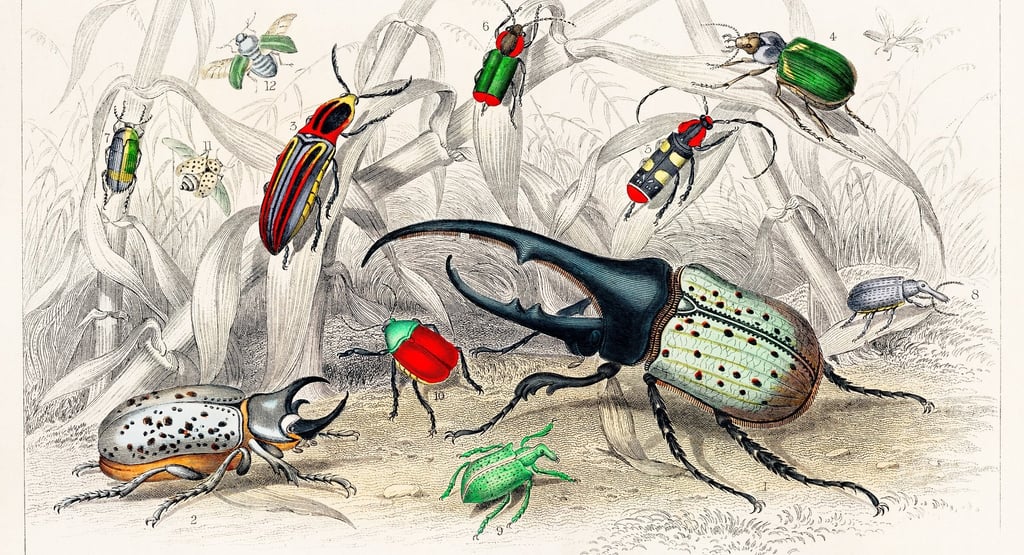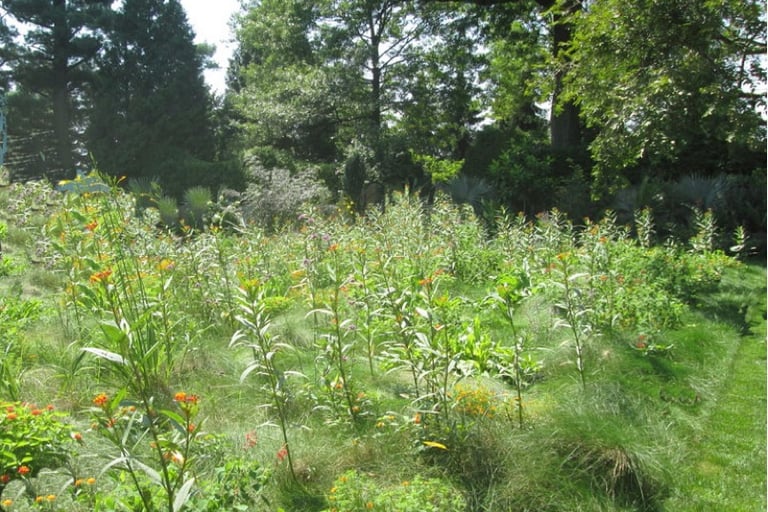How To Make a Beetle Bank
2/19/20253 min read


We are hearing a lot about bees being in trouble, and they are, but we also need to consider helping other insects thrive in a world that has always seen them as the enemy. Predatory ground beetles are a good example and anyone with a bit a land has the power to help them. As with bees, when we help these beetles they in turn help us
One of the best ways to create a beneficial relationship with beetles is by creating a Beetle Bank (aka Beetle Barrow). Organic farmers have been using this system for years and their purpose is to create a place where predatory beetles can live undisturbed and do their job in the form of pest control. These little eco-systems are specifically designed to appeal to carnivorous beetles and not the type of beetles that crawl all over your squash and cucumbers spreading diseases. The problem is most of us garden in a way that is good for destructive insects but bad for beneficial ones.
How to make a Beetle Bank:
Pick a location that is out of the way but close enough to your gardens that the beetles can hunt and forage in it. Twenty feet away or less is best, these beetles are homebodies. You can do this in a sunny or part shade area.
Assemble a mix of wood chips, branches, small logs, dried leaves, soft soil or compost and shape it into a mound that’s at least two feet wide, 3 feet long, and six inches or more above ground level.
Let the materials settle for a few days and it’s especially good to form these mounds right before a rain. If the mound comes apart just rake or shovel it back into shape and you want it a bit compacted.
Plant it up with native grasses and wildflowers. Design is not important, it’s meant to be wild. Along with grasses, make sure to add a few plants like bee balm, mountain mint, rudbeckias and coneflowers because even carnivorous beetles like some nectar and a diversity of seeds in their diet.
Water the plants until they are established.
Once established - leave it alone, really. Other than the occasional removal of invasive plants, or other unwanted species, an area like this is meant to be ignored. Beetles like a dense, messy abode with rotting materials.
So what do you get in return for becoming a beetle landlord? Predatory ground beetles set-up housekeeping and stick around all season to control aphids, slugs, potato beetle larvae, and other garden pests. Unlike ladybugs who fly away as soon as their food supply gets low, ground beetles like to stay put for generations. It’s why you don’t want to disturb or cultivate the area you create for them, but rather just let it stay in its natural state, off by itself where you can mostly ignore it and not feel guilty that it doesn’t look tidy.
Image: completed beetle bank by Diane Greenberg


Recommended Plants for a Shade or Afternoon Shade Bank
Chrysogonum virginianum - Green & Gold aka Goldstar
Coreopsis auriculata Nana - Mouse Eared Coreopsis
Fragaria virginiana - Wild Strawberry
Nemophila maculata - Five Spot Buffalo Eyes (self-seeding annual)
Nemophila menziesii - Baby Blue Eyes ( self-seeding annual)
Prunella vulgaris ssp. lanceolata -Lanceleaf self-heal
Viola soraria - common blue violet or named variety like “Freckles” (also takes shade)
Waldsteinia fragarioides – Barren Strawberry
Recommended Plants for a Sunny to Part Sun Bank:
Antennaria plantaginifolia - Pussytoes
Astragalus crassicaprus -Ground plum
Coreopsis lanceolata- Lanceleaf coreopsis
Phlox subulata - Moss Phlox
Potentilla tridentata (Sibbaldiopsis tridentata) – Wine-leaf Cinquefoil
Pycnanthemum tenuifolium - Slender Mountain Mint
Solidago nemoralis - Gray Goldenrod
Symphyotrichum lateriflorum- Calico Aster
Get in touch.
Socials
Address: 607 Samsonville Road, Kerhonkson, NY 12446
Phone: 1-845-626-2758
Hours: 9:30-6:00, Closed Tuesday and Wednesday
Mid-April to October 31st 2025
Write your text here...
If your inquiry is specifically about landscaping please click here and fill out our:
🌼 LANDSCAPE CLIENT INQUIRY FORM 🌼)
For all other questions and comments go here:
